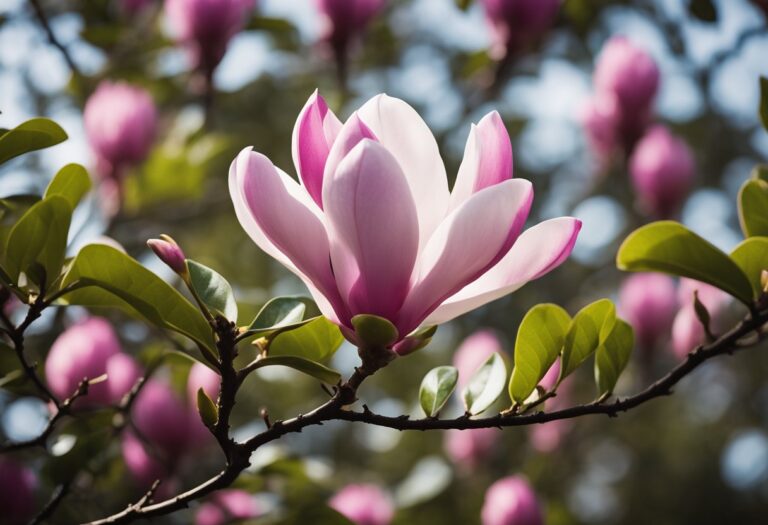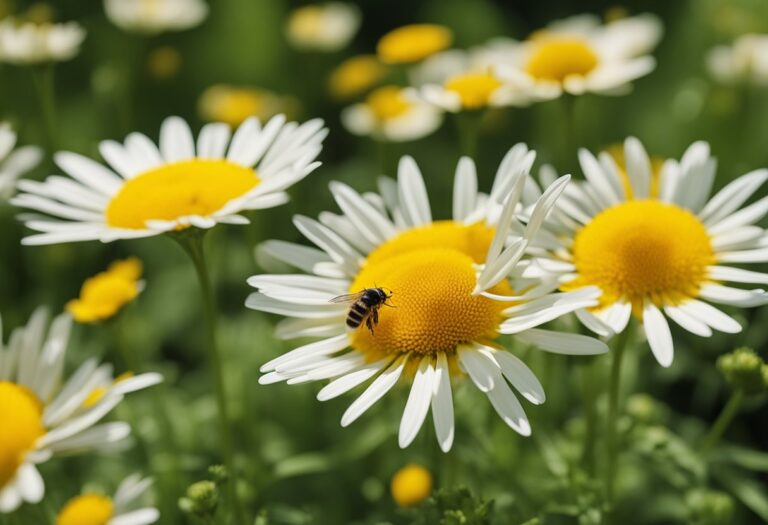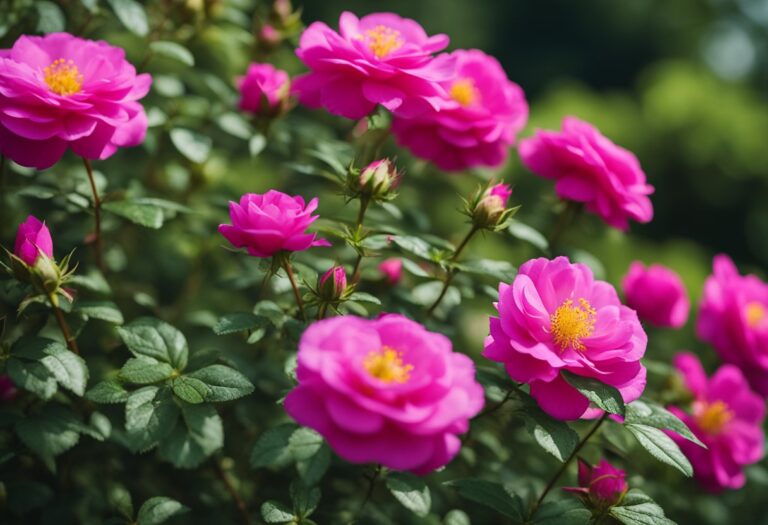Overview of Asclepias Curassavica
Asclepias curassavica, or Tropical Milkweed, is a vibrant, attractive perennial. This plant is recognized for its distinctive, brightly colored flowers and is an important food source for monarch butterflies. Here, you will find key information about its characteristics and habitat.
- Origin: Native to the Caribbean, South America, Central America, or Mexico.
- Habitat: Adaptable to various environments, it is now widespread in tropical and subtropical regions worldwide.
In your garden, you’ll notice that Tropical Milkweed grows as an upright subshrub, reaching heights of up to 1 meter. Its leaves are lanceolate, and its stems are notably hairy. Asclepias curassavica’s characteristic blooms are presented in clusters of orange-red flowers with yellow hoods, which are highly attractive to pollinators.
- Flowering Season: You can expect a long flowering season from early summer into fall, providing consistent color and interest in your garden.
- Nectar Source: The flowers are not only showy but also a crucial nectar source for various butterflies and insects.
Here’s how to recognize the various cultivars of Tropical Milkweed:
- A. curassavica ‘Silky Gold’ features golden-yellow flowers.
- A. curassavica ‘Silky Deep Red’ has deep red blooms.
- A. curassavica ‘Red Butterfly’ offers darker red flowers.
- A. curassavica ‘Apollo Orange’ is distinguished by its pure orange flowers.
With its easy-care nature and long blooming period, Asclepias curassavica can be a low-maintenance yet striking addition to your garden.
Habitat and Distribution
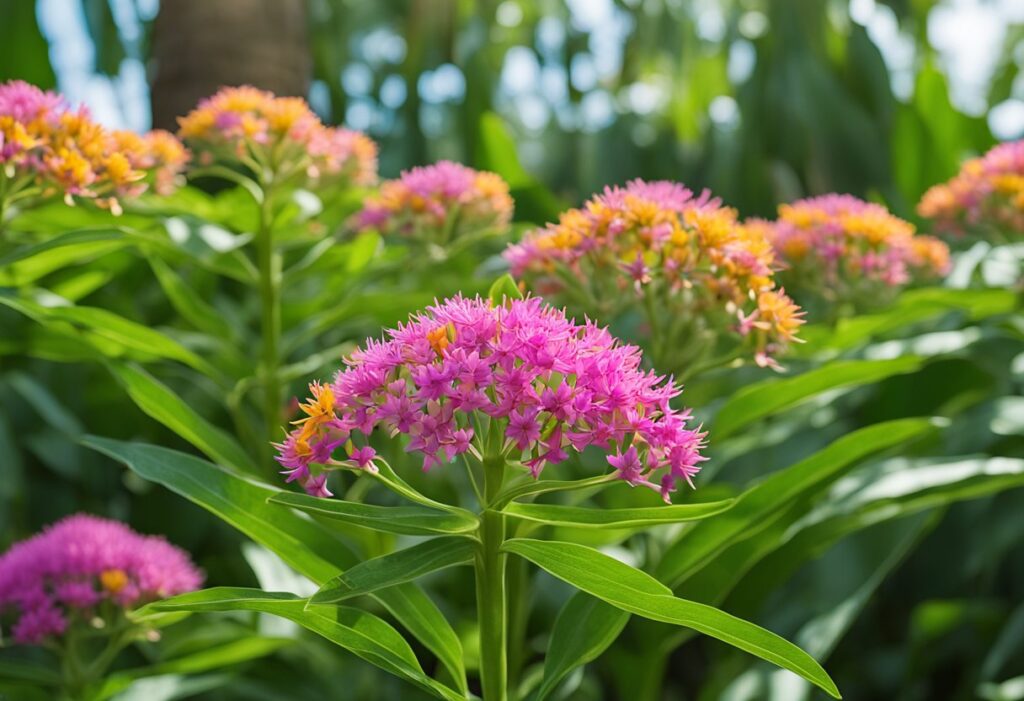
Asclepias curassavica, or tropical milkweed, is notable for its adaptability to various environments. Understanding where it comes from and how it spreads can help you appreciate its ecological impact.
Native Range
Your exploration into the world of Asclepias curassavica begins in its native home, the American tropics. These regions boast the ideal conditions for tropical milkweed to thrive, with a climate that supports its growth year-round.
- Countries: Naturally occurring in Brazil, Mexico, and the Caribbean.
- Habitat: Prefers open areas where it receives ample sunlight.
Global Spread
Since people introduced it outside its native range, Asclepias curassavica has spread across the tropics. Your understanding of its distribution should consider its intentional cultivation due to its ornamental value and the inadvertent spread that has expanded its reach.
- Locations: Now found in tropical and subtropical areas across the globe, including parts of Africa and Asia.
- Cultivation: Often planted in gardens outside its native range for its striking flowers and ability to attract pollinators.
Cultivation and Care
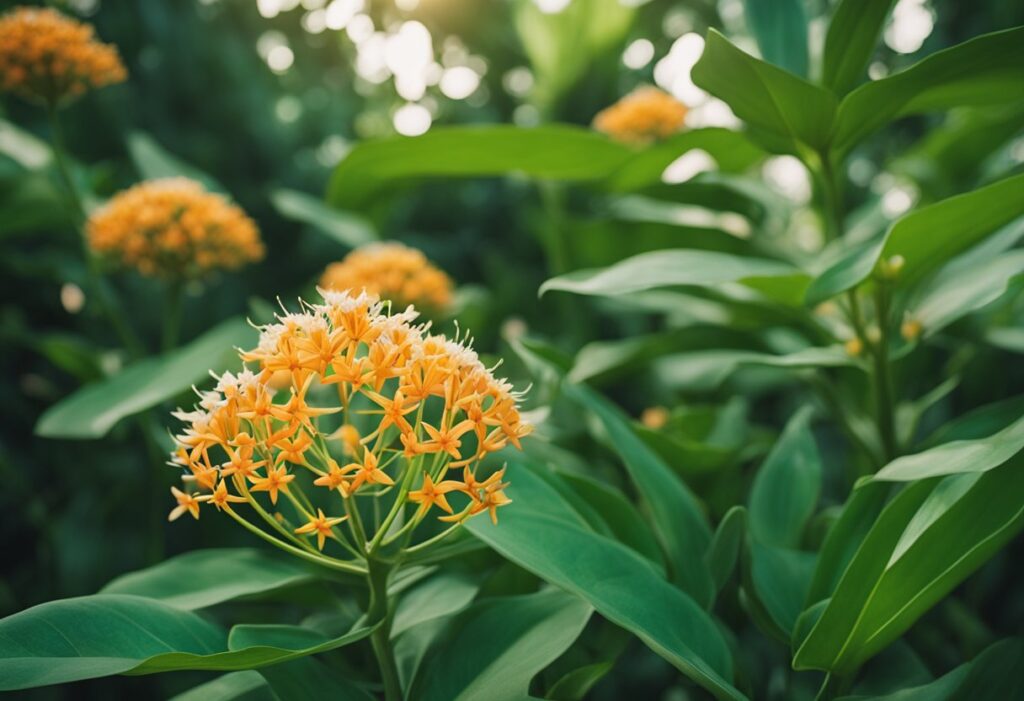
When cultivating Asclepias curassavica, also known as Tropical Milkweed, you’ll want to select the ideal growing conditions and maintain the plant through attentive care, including appropriate pruning practices to ensure healthy growth and prolific flowering.
Growing Conditions
Location: Select a site that receives at least six hours of direct sunlight daily.
Soil: Prepare nutrient-rich, well-draining soil. Although the plant is adaptable to different soil types including dry, moist, and wet soils, well-draining soil is optimal for its growth.
Maintenance and Pruning
Watering: Water the plant consistently while taking care not to overwater. Despite its drought tolerance, Tropical Milkweed performs best with consistent moisture.
Pruning: Regular pruning isn’t necessary; however, you can prune to maintain shape or remove dead or damaged parts. Cutting back the plant can encourage new growth and more blooms.
Ecological Impact

Your understanding of Asclepias curassavica’s ecological impact must consider its effects on pollinators and native species interactions.
Attraction of Pollinators
Tropical milkweed is a significant nectar source for a variety of pollinators. Monarch butterflies, specifically, are attracted to the bright flowers of Asclepias curassavica for sustenance.
- Butterflies: Monarchs utilize the plant for breeding and feeding.
- Bees: Many bee species visit the plant for its nectar.
Tropical milkweed blooms for extended periods, providing a consistent food source not normally available year-round in certain regions.
Interaction with Native Species
When people introduce tropical milkweed to new areas, it can affect the local ecosystem in various ways:
- Competition: It may compete with native milkweed species for resources.
- Predation: Some native predators benefit from the increased presence of monarchs due to tropical milkweed.
While tropical milkweed supports monarch butterflies by offering food and breeding grounds, its persistent presence disrupts their natural migratory patterns. It may lead to higher disease prevalence in local monarch populations.
Uses and Medicinal Properties

Tropical Milkweed, Asclepias curassavica, has various applications, predominantly in gardening and, traditionally, in medicine.
Gardening Uses:
- Attracting Pollinators: This plant’s vibrant orange and red flowers attract pollinators, especially butterflies such as the monarch, to your garden.
- Visual Interest: Its long blooming season, from early summer to fall, adds color and aesthetic appeal to your garden.
Medicinal Properties:
- Parasite Resistance: Some studies have observed that butterflies prefer this plant when infected by parasites. The milkweed is thought to boost parasite resistance, possibly “medicating” the larvae by imparting resistance to OE (Ophryocystis elektroscirrha).
- Traditional Remedies: In traditional medicine, extracts from Tropical Milkweed have been used topically for various ailments, although their scientific backing is limited, and they should not be used without proper knowledge.
Important Caution:
- Toxicity: Remember, the plant’s sap contains toxic compounds that can be a skin irritant. Always handle with care, and ensure you do not ingest any part of the plant.
Frequently Asked Questions
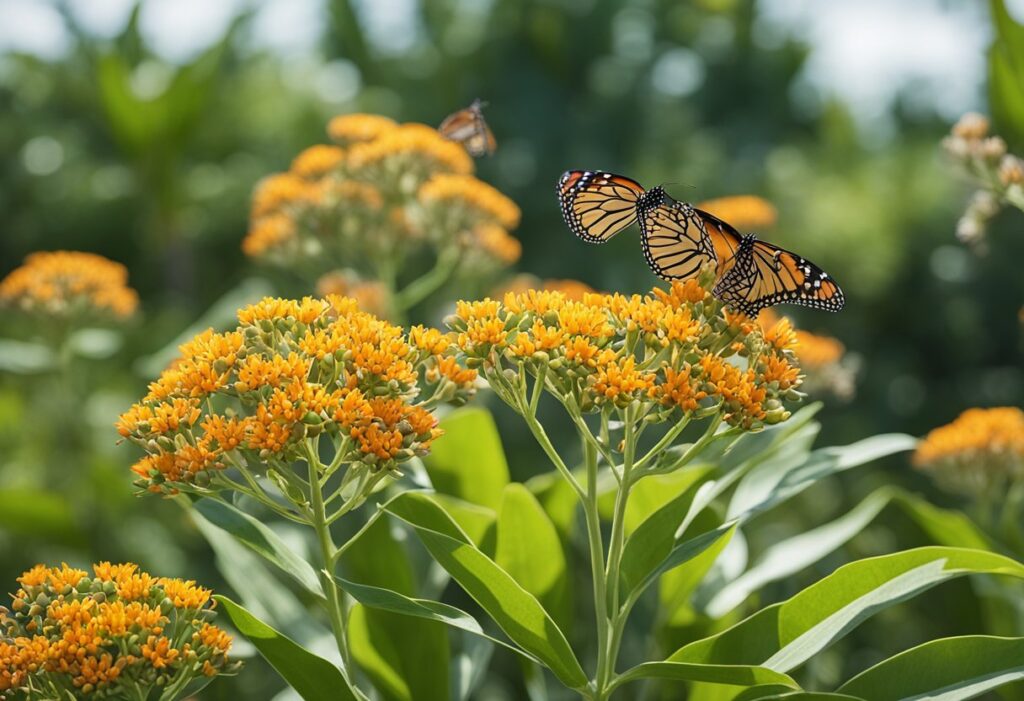
In this section, you’ll find concise answers to common queries about planting, caring for, and understanding the impact of Asclepias Curassavica, also known as Tropical Milkweed.
How should I space my Asclepias Curassavica when planting?
You should space your Asclepias Curassavica approximately 12 to 24 inches apart. This allows each plant enough room to mature and encourages healthy air circulation.
What is the mature size of Asclepias Curassavica plants?
Asclepias Curassavica typically grows to a height of 24 to 36 inches and can spread about 12 to 24 inches wide.
How do I properly care for Asclepias Curassavica in my garden?
To care for Asclepias Curassavica, plant it in a sunny location with well-draining soil and provide consistent watering. It can tolerate some drought, but optimal growth occurs with regular moisture.
Is Asclepias Curassavica considered an invasive species in certain areas?
Yes, in some regions, such as California and the southeastern United States, Asclepias Curassavica has been considered invasive. It’s crucial to consult local guidelines before planting.
Can Asclepias Curassavica return as a perennial plant in my climate zone?
Asclepias Curassavica is a perennial in USDA zones 9 to 11. In cooler zones, it is often grown annually or may return if self-sown seeds germinate the following spring.
What are the ecological concerns associated with planting Asclepias Curassavica for monarch butterflies?
Planting Asclepias Curassavica, especially in areas outside its native range, may disrupt the migration of monarch butterflies and exacerbate disease spread among them. When possible, it’s recommended to plant native milkweed species.







